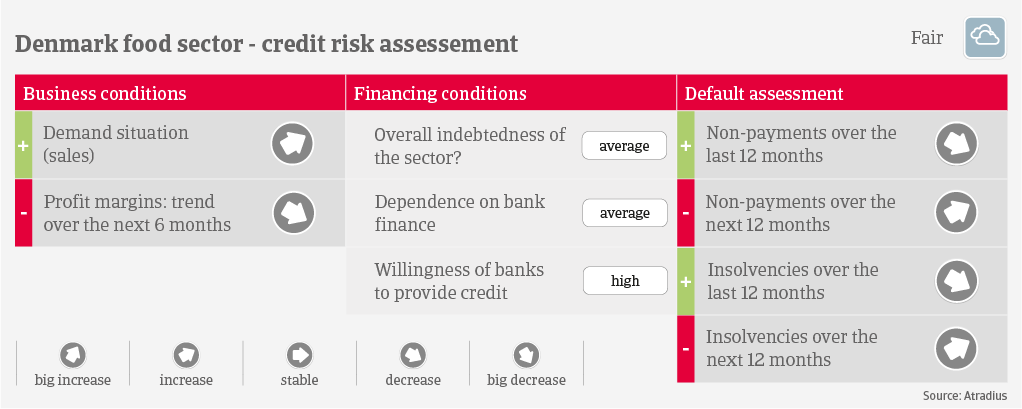Rising insolvencies in some food segments expected

Danish food & beverages value added output is forecast to grow by about 3.5% in 2022 after a 4.3% increase in 2021. Exports of meat and dairy products rebounded in 2021 (about two thirds of Danish food production is destined for overseas). In the domestic market, food retail will benefit from higher household purchasing power due to full employment and rising wages. However, pandemic-related restrictions imposed by the end of 2021 again hit hospitality and related food service.

Profit margins increased in 2021, but food producers and processors currently have to cope with high prices for commodities, energy and labour. In the domestic market, passing on elevated input prices will be difficult, due to the market power of large retailers. The same will account for food exporters, as soon as supply chain strains will abate. Therefore, we expect margins of producers and processors to decrease in the coming months. High prices for electricity and gas are in particular an issue for the energy-intensive greenhouse segment.
Banks are generally willing to provide loans to the sector. Payments in the industry take about 30 days - 60 days on average, and payment behaviour has been good over the past couple of years. However, after very low numbers in 2020 and in 2021 we expect both payment delays and insolvencies to increase this year. Re-imposed restrictions hit hospitality, catering and food services, while high costs for energy severely squeeze margins of fruit and vegetables producers. In this segment, high production costs could make products more expensive than imports. Additionally, as of spring 2022 businesses have to start reimbursing corona-related loans provided by the government. We expect food businesses failures to increase by about 15% in 2022.
Our underwriting stance is currently open for food retail and the beverages, dairy and meat segments. However, for the latter the African Swine Fever remains a downside risk. A spread of cases in Denmark would seriously jeopardise pork meat exports, in particular to Asia. Given the current issues, our underwriting stance is more restrictive for food services, and fruits and vegetables.
Related Documents

915.0KB PDF
